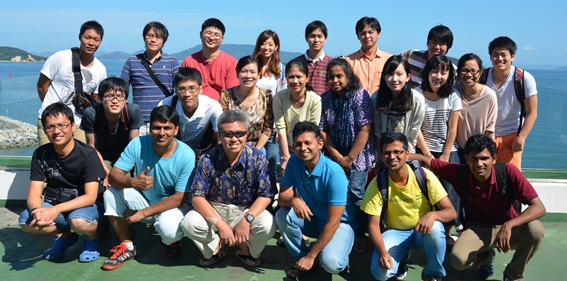Journal: International Journal of Food Microbiology
Title: Prevalence of mobile colistin resistance (mcr) genes in extended-spectrum β-lactamase-producing Escherichia coli isolated from retail raw foods in Nha Trang, Vietnam.
Authors: Phong Quoc Le, Sharda Prasad Awasthi, Noritoshi Hatanaka, Atsushi Hinenoya, Jayedul Hassan, Rabee Alhossiny Ombarak, Atsushi Iguchi, Nga Thuy Thi Tran, Khanh Van Thi Dao, Mai Quang Vien, Huy Xuan Le, Hung Thai Do, Yoshimasa Yamamoto, Shinji Yamasaki*.
Abstract: The aim of the study was to assess the presence of genes in ESBL-producing E. coli (ESBL-Ec) isolated from retail raw food in Nha Trang, Vietnam. A total of 452 food samples comprising chicken (n = 116), pork (n = 112), fish (n = 112) and shrimp (n = 112) collected between 2015 and 2017 were examined for the prevalence of ESBL-Ec. ESBL-Ec were detected in 46.0% (208/452) of retail food samples, particularly in 66.4% (77/116), 55.4% (62/112), 42.0% (47/112) 19.6% (22/112) of chicken, pork, fish and shrimp, respectively. Sixty-five out of the 208 (31.3%) ESBL-Ec isolates were positive for mcr genes including mcr-1, mcr-3 and both mcr-1 and mcr-3 genes in 56/208 (26.9%), 1/208 (0.5%) and 8/208 (3.9%) isolates, respectively. Particularly, there was higher prevalence of mcr-1 in ESBL-Ec isolates from chicken (53.2%, 41/77) in comparison to shrimp (22.7%, 5/22), pork (11.3%, 7/62) and fish (6.4%, 3/47). mcr-3 gene was detected in co-existence with mcr-1 in ESBL-Ec isolates from shrimp (9.1%, 2/22), pork (8.1%, 5/62) and fish (2.1%, 1/47) but not chicken. The 65 mcr-positive ESBL-Ec (mcr-ESBL-Ec) were colistin-resistant with the MICs of 4–8 μg/mL. All mcr-3 gene–positive isolates belonged to group A, whereas phylogenetic group distribution of isolates harboring only mcr-1 was B1 (44.6%), A (28.6%) and D (26.8%). PFGE analysis showed diverse genotypes, although some isolates demonstrated nearly clonal relationships. S1-PFGE and Southern hybridization illustrated that the mcr-1 and mcr-3 genes were located either on chromosomes or on plasmids. However, the types of mcr genes were harbored on different plasmids with varied sizes of 30–390 kb. Besides, the ESBL genes of CTX-M-1 or CTX-M-9 were also detected to be located on plasmids. Noteworthy, co-location of CTX-M-1 with mcr-1 or mcr-3 genes on the same plasmid was identified. The conjugation experiment indicated that the mcr-1 or mcr-3 was horizontally transferable. All mcr-ESBL-Ec isolates were multidrug resistance (resistance to ≥3 antimicrobial classes). Moreover, β-Lactamase-encoding genes of the CTX-M-1 (78.5%), CTX-M-9 (21.5%), TEM (61.5%) groups were found in mcr-ESBL-Ec. The astA gene was detected in 27 (41.5%) mcr-ESBL-Ec isolates demonstrating their potential virulence. In conclusion, mcr-1 and mcr-3 genes existed individually or concurrently in ESBL-Ec isolates recovered from retail raw food in Nha Trang city, which might further complicate the antimicrobial-resistant situation in Vietnam, and is a possible health risk for human.
Highlights
1. High prevalence of mcr-1 positive ESBL-E. coli isolated from raw food in Vietnam.
2. mcr-ESBL-E. coli isolates could be potentially virulent due to presence of astA gene.
3. First report of mcr-3 gene in E. coli from fish and shrimp in Vietnam.
4. Concurrence of mcr-1 and mcr-3 genes on chromosomes of a single E. coli isolate.
5. Co-existence of CTX-M-1 with mcr-1 or mcr-3 on the same plasmid in ESBL-E. coli.



